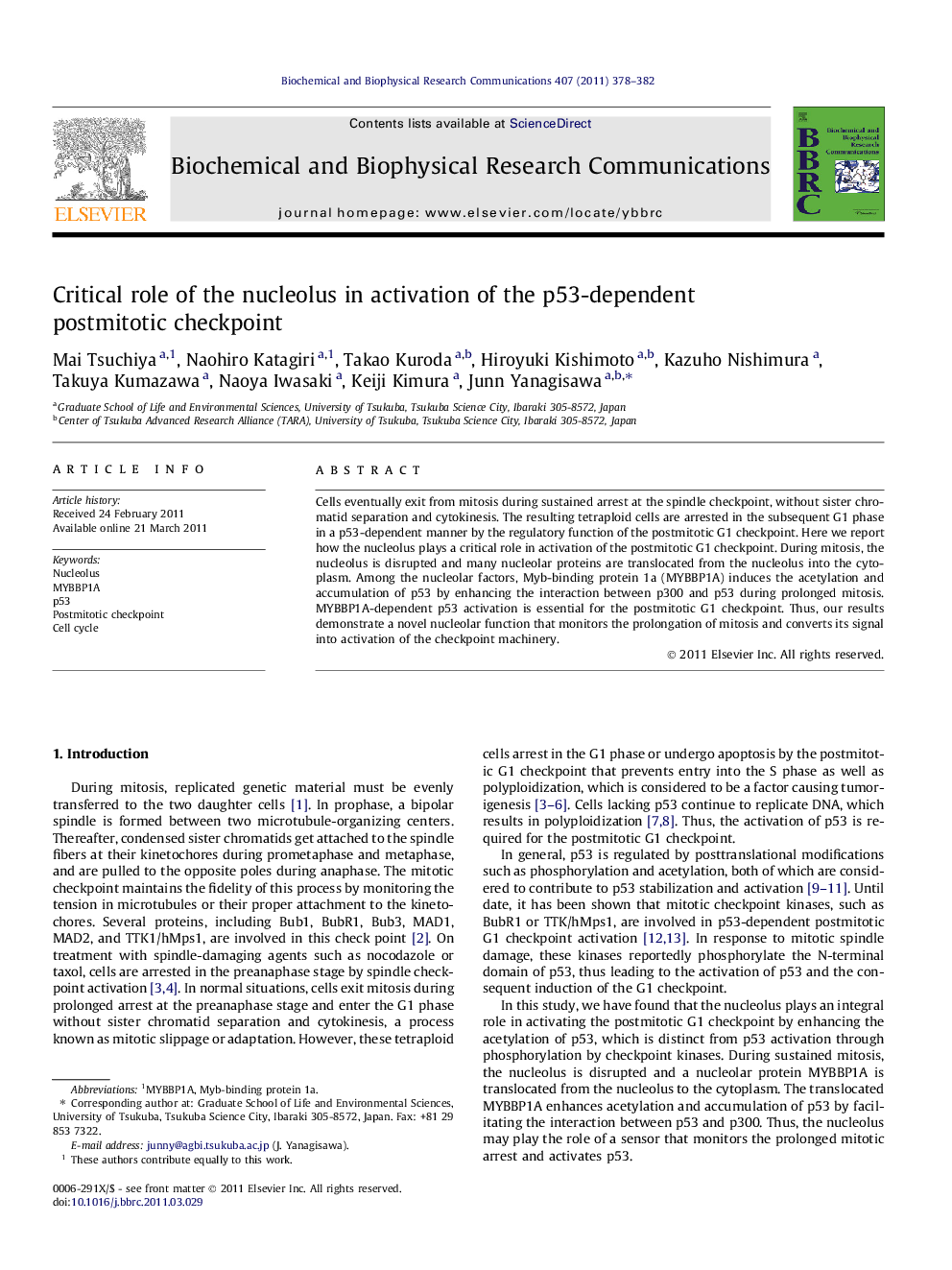| کد مقاله | کد نشریه | سال انتشار | مقاله انگلیسی | نسخه تمام متن |
|---|---|---|---|---|
| 1930825 | 1050531 | 2011 | 5 صفحه PDF | دانلود رایگان |

Cells eventually exit from mitosis during sustained arrest at the spindle checkpoint, without sister chromatid separation and cytokinesis. The resulting tetraploid cells are arrested in the subsequent G1 phase in a p53-dependent manner by the regulatory function of the postmitotic G1 checkpoint. Here we report how the nucleolus plays a critical role in activation of the postmitotic G1 checkpoint. During mitosis, the nucleolus is disrupted and many nucleolar proteins are translocated from the nucleolus into the cytoplasm. Among the nucleolar factors, Myb-binding protein 1a (MYBBP1A) induces the acetylation and accumulation of p53 by enhancing the interaction between p300 and p53 during prolonged mitosis. MYBBP1A-dependent p53 activation is essential for the postmitotic G1 checkpoint. Thus, our results demonstrate a novel nucleolar function that monitors the prolongation of mitosis and converts its signal into activation of the checkpoint machinery.
► In mitosis, MYBBP1A translocates from the nucleolus to the cytoplasm.
► MYBBP1A interacts with p53 under nocodazol treatment.
► MYBBP1A enhances acetylation of p53.
► MYBBP1A prevents polyploidization via p53 activation.
Journal: Biochemical and Biophysical Research Communications - Volume 407, Issue 2, 8 April 2011, Pages 378–382